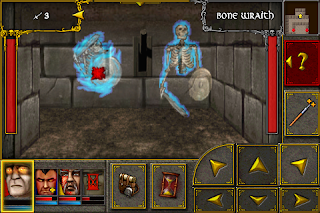Fox & Geese is another ancient game that followed a winding road to the New World. It’s usually classed as a “Tafl” game, which is a category of games in which the sides are unevenly matched. The games derive their name from a cluster of Icelandic games related to Hnefatafl, but in fact “tafl” just means “board” or “table.” It’s a word found in various Germanic languages, and is often used as a suffix in games as diverse as Halatafl (an early version of Backgammon) and Skáktafl (a kind of Chess).
Over the years, “Tafl” just came to mean any game where one side outnumbers another, with the weaker side having different movement rules or victory conditions. Technically, they're called "asymmetrical abstract strategy games." These are classed as “hunt” games, and usually feature some kind of force (fox, wolf, king) trying to elude or eliminate a larger force (geese, hare, soldiers). The first reference appears in the Icelandic Sagas around 1300 AD, but the games are no doubt older than this. The earliest English reference to a game like Fox & Geese comes from the household inventory of King Edward IV (1461-1470), where his account books list an order for “two foxis and 26 hounds in silver overgilt.” It was not unusual for the "geese" to be called "hounds." (There's also a game called Fox & Hounds, but that's a different beast.)
Although there’s no written or archeological record for either the origin of Tafl games or their migration to England, we can always speculate. The Viking raids on Britain ended, oddly enough, in the very busy year of 1066, when the Norsemen were defeated at the Battle of Stamford Bridge. Once the Norse were shoved out the back door, the Normans came in the front door, and stuck around a little while. (Like,
forever.) Since the Normans were descended from the Norse, we can speculate that Tafl games might have found their way to Britain through either source. Either way, it’s wholly possible that Halatafl, the game most like Fox & Geese, might have been in Britain as early as the 11th century.
Some of my own ancestors (the de Suttons) arrived with the Normans, and their descendants found their way to American soil in the 17th century. This is how folk culture migrates. The Norse conquer Northern France, intermarry, and create lots of little Normans. The Normans conquer Britain. The English colonize America. The Americans drive off the English. Along the way, they carry their games with them to pass the time, transmitting them across the space of a thousand years to the point where I buy a small portable set in a gift shop in Williamsburg and play the game in a Colonial tavern with my kids while waiting for our meals to arrive. Cultural migration and transmission is not particularly mysterious, but it is fascinating.
In any case, by the 18th century we find Fox & Geese well and truly entrenched among the colonials. It was a popular board game, although one generally favored by children rather than adults.
Colonial children also used their Fox & Geese boards to play Solitaire, a jumping game in which a marble is placed on every space save one. The goal is to eliminate as many marbles as possible by hopping. If you've ever eaten in a Cracker Barrel, you've probably played a version using golf tees on a triangular piece of wood.
How to Play
The rules of Fox & Geese evolved over the centuries, but the version played in Colonial America was probably the 1 fox, 13 geese version, which is the one most popular today. It’s played on a cruciform board with 33 spaces. Most boards use marbles for pieces and an indented playing surface to keep them from rolling all over the place. The geese are arranged on one side of the board, with no gaps between the pices. The fox is place near the middle. It can also be played using 17 geese.
The player controlling the geese needs to surround the fox so that he can no longer move. This is commonly done by cornering him and surrounding him on all sides. The player controlling the fox has to avoid being cornered long enough to reduce the number of geese to the point where cornering is no longer possible.
To accomplish this, each side has different movement rules.
The fox can move one space in any direction. If he is capable of jumping over a goose, that goose is “killed” and removed from the board. He may also double-jump, capturing two or more geese in a sequence of jumps, just like checkers. There are no forced jumps.
The geese, on the other hand, may only move forward or to the side. They may not move backwards. They also cannot capture. (After all, they’re geese. Their much feared Honking and Nipping Attacks really don’t bother a fox all that much.) Their strategy is to herd the fox into a corner before he can escape or jump.
Most commentators consider the goose to be the favored side, with the fox unable to win if played correctly.
 |
| Halatafl board discovered in Viking ruins, Ballinderry, Ireland |























